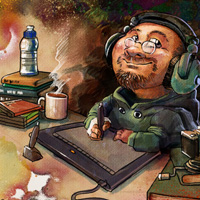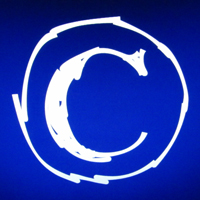- photo contests ▼
- photoshop contests ▼
- Tutorials ▼
- Social ▼Contact options
- Stats ▼Results and stats
- More ▼
- Help ▼Help and rules
- Login
Mapping Materials on Objects - Autocad Tutorial

Whenever you are attaching materials to an object in AutoCAD, you are effectively ‘stretching' the image of the material around the object. For many objects, this can be acceptable. For a lot of others, though, you may want to adjust how the material is displayed on the object. This process is called mapping.
submitted: 5 years and 3521 days ago
Setting and Using the UCS - Autocad Tutorial

When working in 3D, it sometimes necessary to change the plane that you are drawing on. For example, if you need to add some detail to the side of a wall, you would want to draw on that plane. It's like taking a sheet of paper up off the floor (WCS) and taping it onto the wall (UCS).
submitted: 5 years and 3521 days ago
Boolean Operations - Autocad Tutorial
Primitive, but Powerful - Autocad Tutorial

A primitive solid is a ‘building block' that you can use to work with in 3D. Rather than extruding or revolving an object, AutoCAD has some basic 3D shape commands at your disposal. From these basic primitives, you can start building your 3D models. In many cases, you get the same result from drawing circles and rectangles and then extruding them, but doing it one command is generally faster. Using these with Boolean operations can be a very effective way of drawing in 3D.
submitted: 5 years and 3521 days ago
Materials and Rendering - Autocad Tutorial

One of the more interesting aspects of working in 3-D is that you can visualize what your design will look like. You have so far used the hide and shade commands to give you some idea towards how the final piece will look. The next step is to learn about the RENDER command. This command is the most powerful one for viewing your objects. Using render, you are able to add realistic lighting and materials to get the most realistic view of what you're designing.
submitted: 5 years and 3521 days ago
Revolving Objects and Revsurf - Autocad Tutorial

So far you've only worked with very basic blocks. Suppose that you need to draw something other than a rectangular cube. You did some new shapes in the previous lesson while lofting. AutoCAD gives you two commands for those times when you need to draw cylindrical objects. One (revsurf) will give you a complex model comprised of a 3-D surface made up of many facets. The other (revolve) will give you a solid object. The method that you use will once again depend on what you need it for. Take a look at the lamp on this page. This is an example of two different types of objects requiring two types of object construction.
submitted: 5 years and 3521 days ago
Extruding and Lofting - Autocad Tutorial
Regions and 3D Surfaces - Autocad Tutorial
Line Thickness Drawing Techniques - Autocad Tutorial

In this lesson you'll create the same chair by drawing lines and then giving them thickness. Think of thickness as the height of the line or how tall it is. This is different from the width of the line that you learned in the polyline lesson. This is a quick, simple way of achieving some degree of 3-D feel. Once again, remember that in some instances, simple concepts may do the job. This is also a good technique for AutoCAD LT users, who don't have the option to draw in true 3-D.
submitted: 5 years and 3521 days ago
Wireframe Drawing Techniques - Autocad Tutorial

In this lesson, you will be drawing two objects. First, you will draw the shape from the isometric exercise (refer to that exercise for dimensions) using the same line command that you have always used. Then you will draw a simple chair using the same method. This exercise is good practice to work on the XYZ co-ordinate system. Wireframe models are the simplest form of true 3D drawings. They can be used for conversion to other programs or other simple uses. Still, this is not a common way of drawing in 3D these days.
submitted: 5 years and 3521 days ago









